
Patient Registries – What are they and why do they matter?
Have you ever wanted to volunteer as an Ataxia research participant? Have you been unsure about how to find out about ongoing research studies? Have you wanted to help researchers Read More…
Bill Nye the Science Guy is speaking at the 2024 Annual Ataxia Conference! Register now. LEARN MORE!
There is an urgent need for the Ataxia community to be “clinical trial ready” because many therapies are in the drug development pipeline. To successfully bring a treatment to the market, patient involvement is crucial.
The Ataxia community is needed to participate in research studies and clinical trials, but that is not their only role in drug development. Drug developers need to understand how Ataxia symptoms impact a person’s daily life in order to find meaningful solutions.
NAF developed PrepRARE as a program to educate members about all stages of the clinical trial process. Check out our series of webinars, articles, and other information to make sure that you are ready to make informed decisions about participation when a new clinical trial begins recruitment.
Looking for the information about ataxia clinical trials and research studies that are recruiting participants? Visit our Participate in Ataxia Research page.
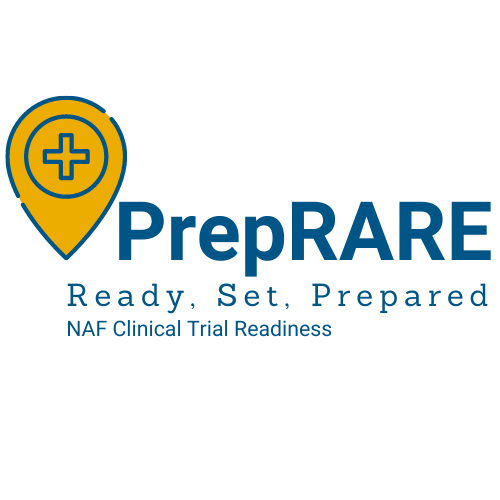
A clinical trial is a process to test a potential new treatment’s safety and effectiveness. The treatment, often referred to as an “intervention,” may be a medicine, device, procedure, or changes to the participants behavior – such as diet. The clinical trial is designed to measure the outcome for participants when the intervention is introduced. In the United States, the Food and Drug Administration (FDA) is the regulatory agency that oversees all clinical trials. The FDA is also responsible for reviewing applications for new interventions to treat a disease or condition. The FDA gives approval if the data from the clinical trial proves that benefits of the intervention outweigh the known risks.
Before an intervention is tested in people, it must be successful in animal tests and proven that it will likely be safe for humans. After a clinical trial is ready for human participants, how does the process work? Keep reading to learn!
When a researcher or pharmaceutical company want to test their intervention on humans, they must submit an Investigation New Drug (IND) application to the FDA. After they receive approval, they can begin recruiting volunteers to participate in their clinical trial.
After IND approval, the clinical trial can start enrolling patients to try their intervention.
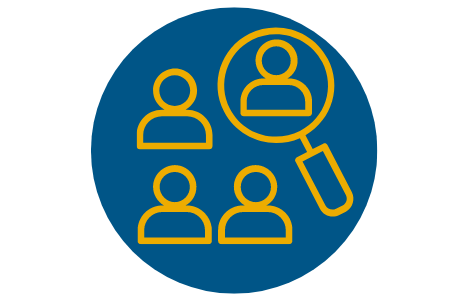
Clinical trials are listed at ClinicalTrials.gov. The listing will include detailed information about where the study will take place, for how long, and eligibility criteria for participants.
Researchers and pharmaceutical companies will often contact a patient advocacy organization for the disease or condition to help with their recruiting efforts. Staying connected with NAF is a great way to learn about new clinical trials for Ataxia. Become a member to receive notices when new clinical trials that might interest you are recruiting participants.
The next thing to know is that clinical trials are classified by their phase, which include Phase I, Phase II, and Phase III. Phase I is typically a small number of participants to determine safety of the intervention. Phase II begins after a successful Phase I and evaluates effectiveness of the intervention. If the treatment benefits enough patients in Phase II, then the trial moves to Phase III. Phase III tests the treatment in a larger population and compares it against current treatments available.
Learn More:
Clinical Trial Phases
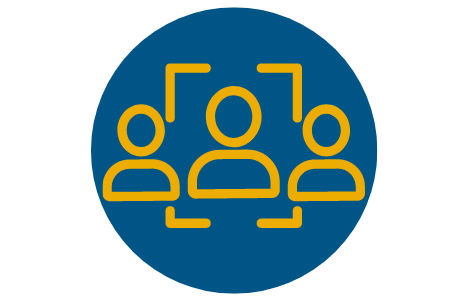
Even if there aren’t clinical trials available right now, there are steps you can take to be ready when a new trial starts recruiting!
CRC-SCA Natural History Study Information Panel
Safety in Clinical Trials
Drug Development from a Biotech Perspective
Finding Ataxia Information Online
All About Imaging: CT, MRI, and PET
What are Natural History Studies?
Building Your Clinical Trial Resume
Drug Development for Ataxias
Brain Donation in Ataxia
MERA study for BIIB132
STRIDES Study for SCA3
Breakthroughs in Ataxia Research

Have you ever wanted to volunteer as an Ataxia research participant? Have you been unsure about how to find out about ongoing research studies? Have you wanted to help researchers Read More…
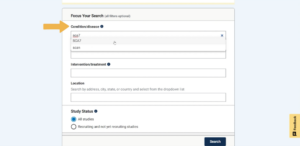

Many people with Ataxia are interested in participating in clinical research, but are not sure where to start. It can be tricky to know where to start looking for information. Read More…


It takes a long time to develop a new drug. Not to mention it can be very expensive. But why does it take so long and cost so much? In Read More…
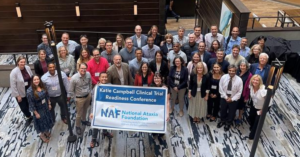

The following is a high-level overview of the Katie Campbell CRC-SCA Face-to-Face Meeting held from September 11-13, 2023, in Bloomington, Minnesota. This meeting focused on logistics and discussion of the Read More…
Do you have a question about clinical trials that you would like answered? You can suggest a topic for a future PrepRARE webinar, article, or infographic using this form.
Due to the number of suggestions received, not all suggestions will receive a reply email.
Our generous donors help us fund promising Ataxia research and offer support services to people with Ataxia. Your gift today will help us continue to deliver on our mission to improve the lives of persons affected by Ataxia.
Join for FREE today! Become a part of the community that is working together to find a cure. As a member you will receive access to the latest Ataxia news with our e-newsletter and Generations publication.

